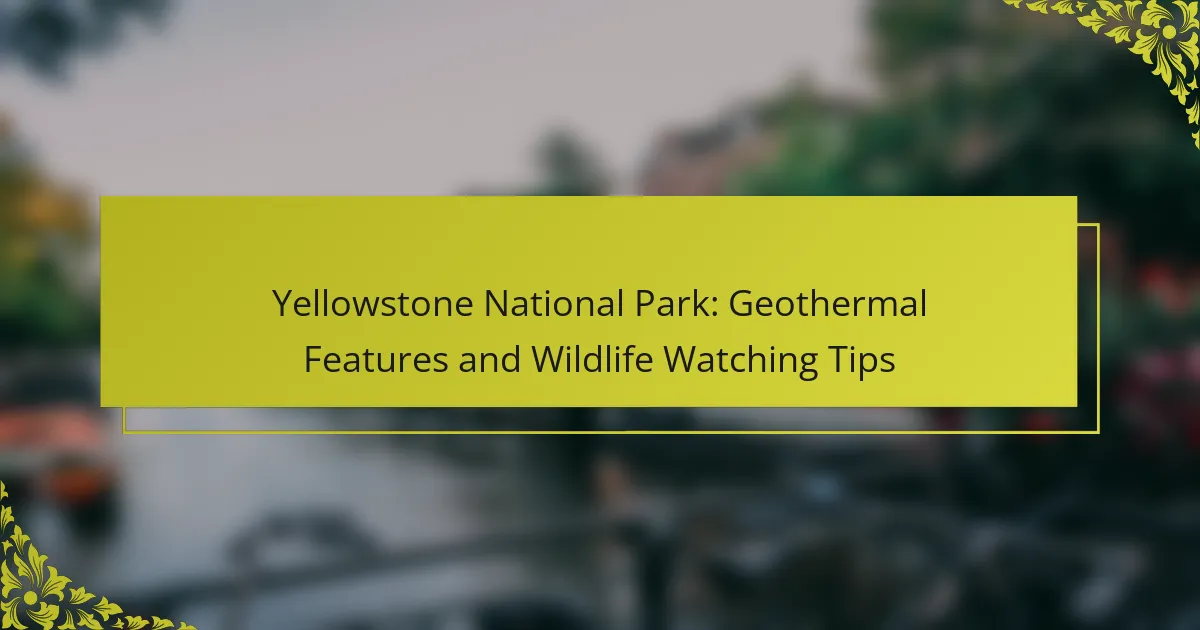Yellowstone National Park offers unparalleled opportunities for wildlife watching amidst its stunning geothermal features. Discover iconic sites like Old Faithful and Grand Prismatic Spring. Learn how these geothermal wonders create unique habitats for diverse species. Enhance your wildlife viewing experience with essential tips on timing, location, and respectful observation.
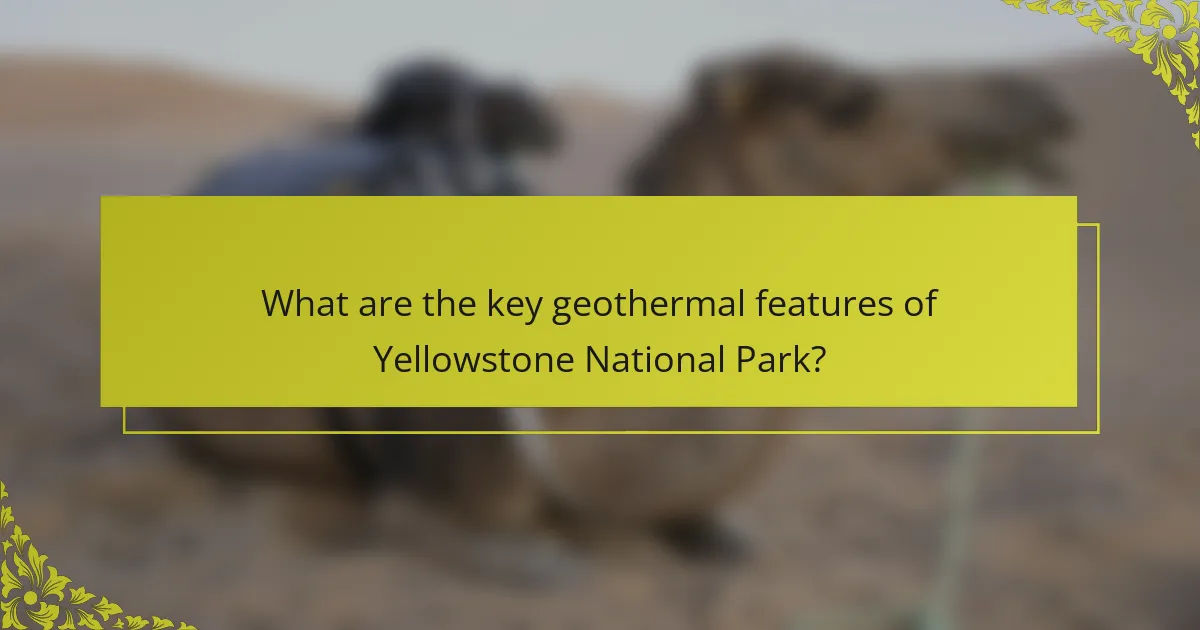
What are the key geothermal features of Yellowstone National Park?
Yellowstone National Park features geothermal wonders like geysers and hot springs. Notable examples include Old Faithful, which erupts approximately every 90 minutes, and Grand Prismatic Spring, renowned for its vibrant colors. These geothermal features are fueled by the park’s volcanic activity, with a supervolcano lying beneath. Wildlife watching is enhanced by these unique landscapes, attracting diverse species.
How do geysers like Old Faithful operate?
Geysers like Old Faithful operate through a combination of underground water, heat from magma, and pressure. Water seeps into underground chambers, where it is heated by magma. As pressure builds, the water eventually erupts through the surface, creating a geyser. Old Faithful erupts approximately every 90 minutes, showcasing the predictable nature of this geothermal feature. This regularity is a unique attribute that attracts visitors to Yellowstone National Park.
What makes hot springs unique in Yellowstone?
Hot springs in Yellowstone are unique due to their diverse mineral compositions and varying temperatures. These geothermal features arise from volcanic activity, creating colorful pools and geysers. Notably, the Grand Prismatic Spring is the largest hot spring in the United States, showcasing vibrant colors from microbial mats. Additionally, the unique geothermal ecosystem supports various wildlife, making the area a prime spot for observation.
Why are mud pots significant to the park’s ecosystem?
Mud pots are significant to Yellowstone’s ecosystem as they indicate geothermal activity and contribute to nutrient cycling. These features create unique habitats for specialized microorganisms that thrive in extreme conditions. The acidic environment of mud pots supports the growth of specific bacteria, which play a crucial role in breaking down organic matter. Additionally, the minerals released from mud pots enrich the surrounding soil, promoting plant diversity. This interplay enhances overall biodiversity and supports various wildlife species in the park.
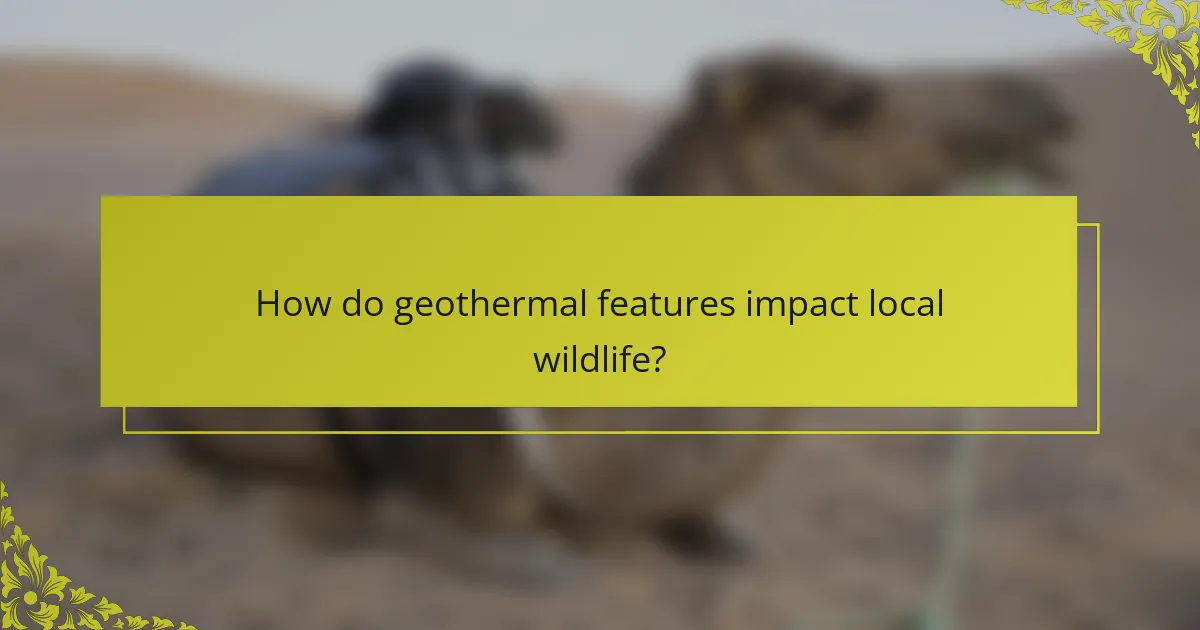
How do geothermal features impact local wildlife?
Geothermal features significantly influence local wildlife by creating unique habitats and microclimates. These environments support diverse species adapted to extreme conditions, such as thermophilic bacteria and specific plant life. For instance, the warm waters and mineral-rich soils promote growth of unique flora, which in turn attracts various herbivores and their predators. Wildlife watching in Yellowstone offers opportunities to observe these interactions, particularly near hot springs and geysers.
What habitats are created by geothermal activity?
Geothermal activity creates diverse habitats, including hot springs, geysers, and fumaroles. These unique environments support specialized wildlife adapted to extreme conditions. For instance, the colorful microbial mats in hot springs provide habitats for various microorganisms and attract unique species like the Yellowstone cutthroat trout. Additionally, the thermal features influence surrounding ecosystems, creating microhabitats that enhance biodiversity.
Which species are commonly found near geothermal areas?
Common species found near geothermal areas in Yellowstone National Park include bison, elk, grizzly bears, wolves, and various bird species. These animals thrive in the unique ecosystem created by geothermal features. For example, bison often graze near hot springs, while birds are attracted to the abundant insects in warm areas.
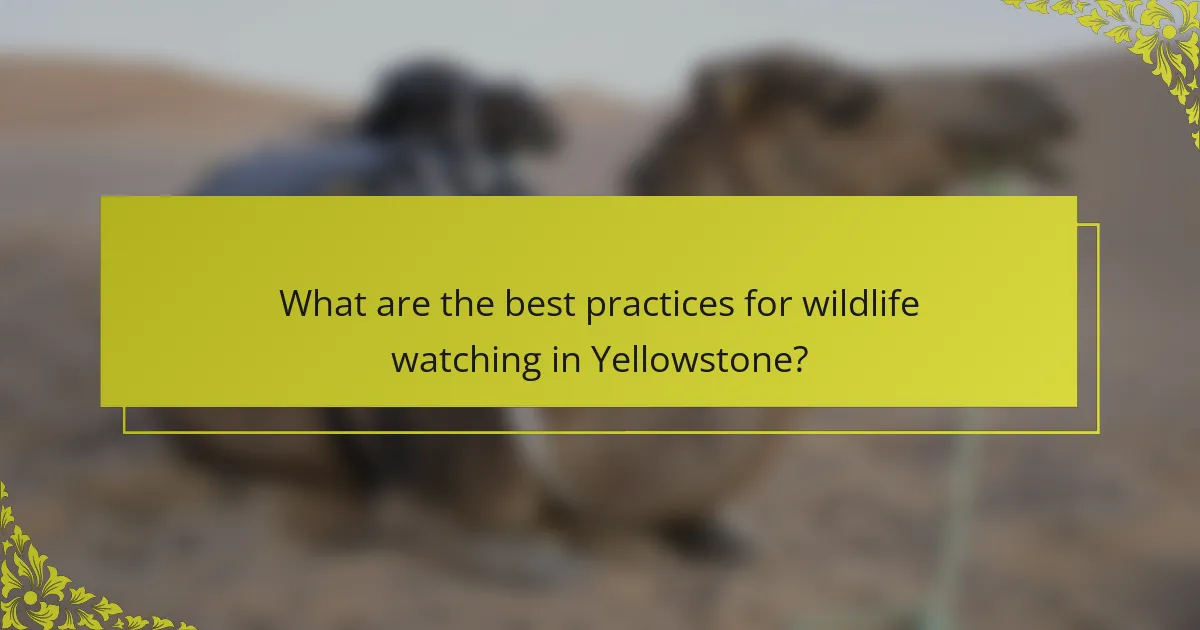
What are the best practices for wildlife watching in Yellowstone?
To enhance wildlife watching in Yellowstone, arrive early, maintain a safe distance, and respect park regulations. Use binoculars for better viewing and avoid loud noises. Familiarize yourself with animal behavior to increase sightings. Stay on designated paths to protect habitats.
How can visitors prepare for wildlife encounters?
Visitors can prepare for wildlife encounters in Yellowstone National Park by following essential guidelines. First, maintain a safe distance from animals, ideally at least 100 yards from bears and wolves and 25 yards from other wildlife. Second, carry bear spray and know how to use it. Third, travel in groups, as this deters aggressive animal behavior. Fourth, stay on designated trails to minimize disturbances to wildlife habitats. Lastly, educate yourself about the specific animals you may encounter, including their behaviors and habitats, to enhance your experience and safety.
What are the recommended times for optimal wildlife viewing?
The best times for optimal wildlife viewing in Yellowstone National Park are early morning and late afternoon. During these hours, animals are most active, increasing the chances of sightings. Spring and fall are particularly favorable seasons for observing diverse wildlife.
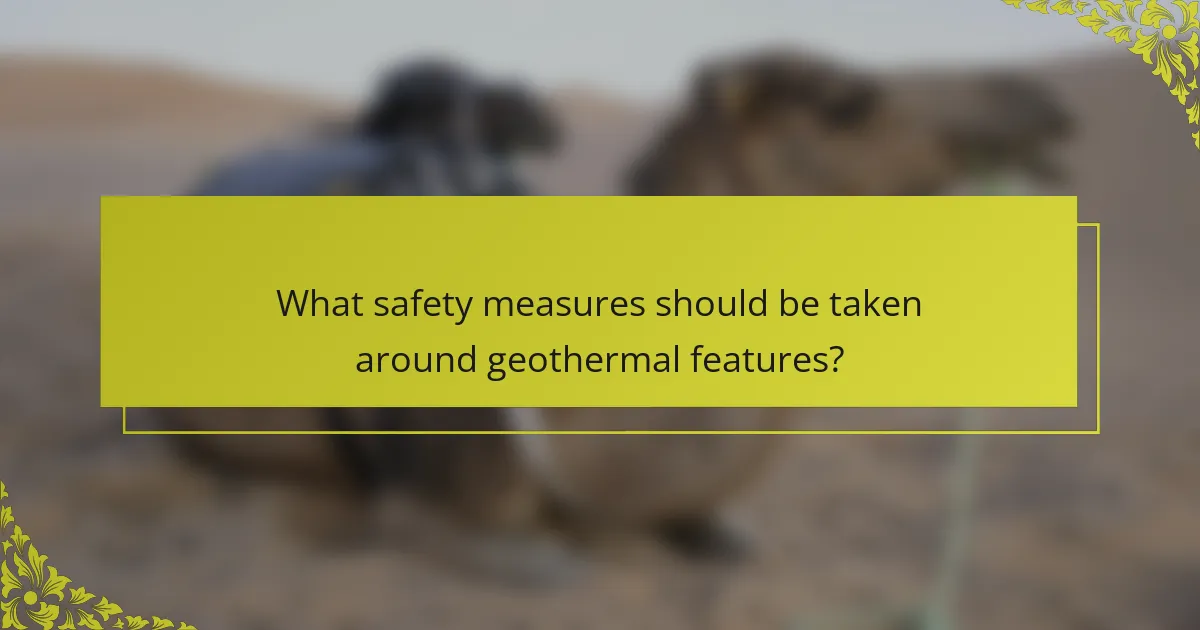
What safety measures should be taken around geothermal features?
To ensure safety around geothermal features in Yellowstone National Park, stay on designated paths, maintain a safe distance, and heed warning signs. Avoid touching water or ground in these areas, as temperatures can exceed boiling point. Always supervise children and pets closely.
Why is it important to stay on designated paths?
Staying on designated paths in Yellowstone National Park is crucial for safety and conservation. These paths protect visitors from geothermal hazards and minimize human impact on delicate ecosystems. For example, walking off-trail can damage fragile plant life and disturb wildlife habitats. Additionally, designated paths help prevent accidents, ensuring a safer experience while observing the park’s unique geothermal features and diverse wildlife.
How can visitors minimize their impact on the environment?
Visitors can minimize their impact on the environment by following sustainable practices. Stay on designated trails to protect fragile ecosystems and avoid disturbing wildlife. Use reusable containers to reduce waste and pack out all trash. Observe wildlife from a distance to prevent stress on animals. Respect fire restrictions to prevent wildfires and choose eco-friendly transportation options. Lastly, educate others about conservation efforts to promote awareness.
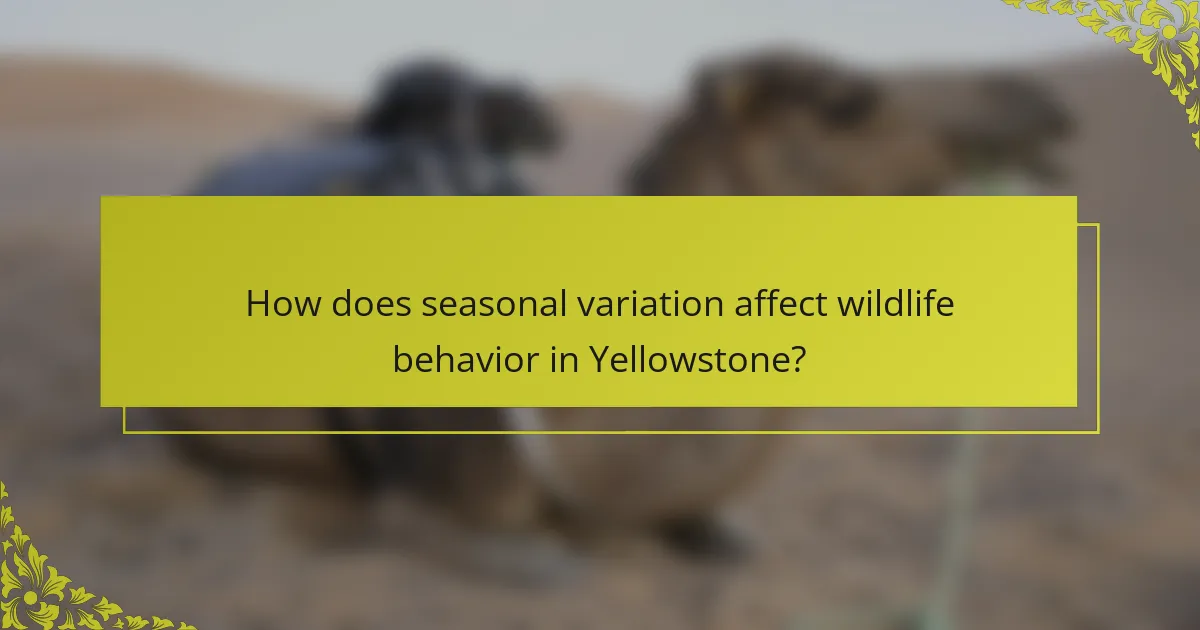
How does seasonal variation affect wildlife behavior in Yellowstone?
Seasonal variation significantly influences wildlife behavior in Yellowstone. Animals adapt their activities based on temperature changes and food availability throughout the year.
In spring, many species emerge from hibernation, seeking food and mating opportunities. Summer brings increased activity as animals forage and raise young. Fall triggers migration and preparation for winter, while winter leads to reduced activity and reliance on stored resources.
These behavioral shifts are crucial for survival, demonstrating the connection between climate and wildlife. Observing these patterns enhances wildlife watching experiences in the park.
What changes occur in animal activity during winter months?
Animal activity in Yellowstone National Park decreases during winter months. Many species, such as elk and bison, migrate to lower elevations for food. Predators like wolves become more active in search of prey, while some animals enter hibernation or torpor. Wildlife watching is best during early morning or late afternoon when animals are more active. Visitors should dress warmly and be prepared for changing weather conditions.
How do migration patterns influence wildlife visibility in spring?
Migration patterns significantly enhance wildlife visibility in spring. As animals return to Yellowstone National Park, their movements coincide with the emergence of new vegetation and warmer temperatures. This seasonal shift attracts visitors eager to observe diverse species. For example, the return of migratory birds increases sightings, while larger mammals like elk and bison become more active. The geothermal features also create unique habitats that support various wildlife, making spring an ideal time for wildlife watching. Understanding these patterns can improve the experience for park visitors.
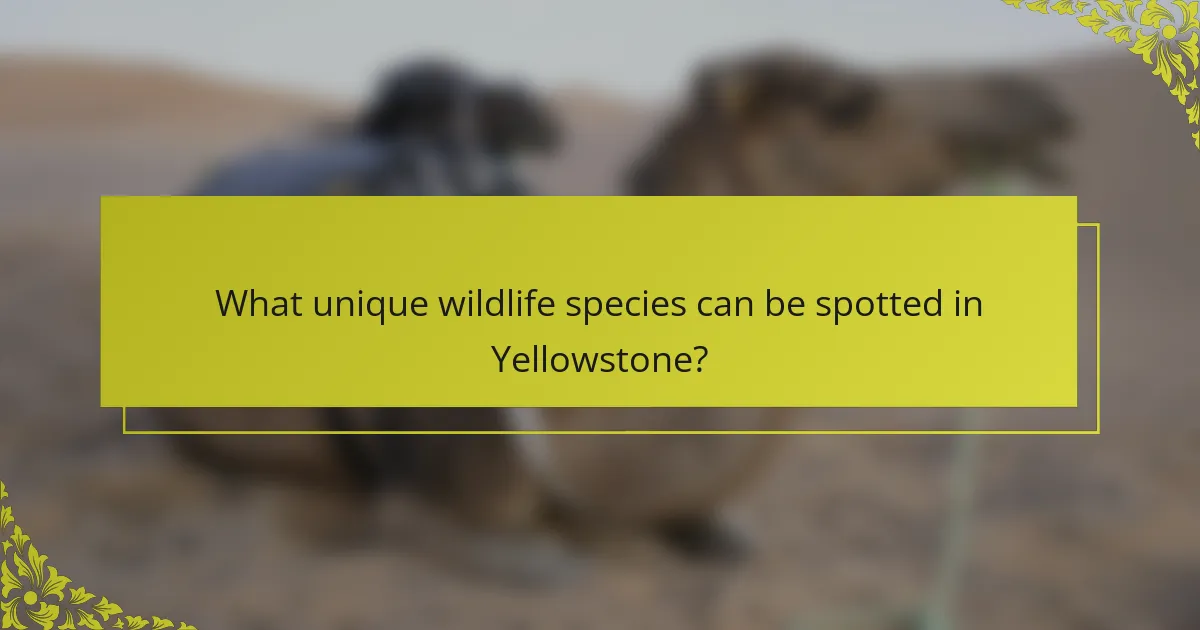
What unique wildlife species can be spotted in Yellowstone?
Yellowstone National Park is home to unique wildlife species such as the gray wolf, bison, and bald eagle. These species thrive in diverse habitats, showcasing the park’s ecological richness. The gray wolf, reintroduced in 1995, plays a critical role in maintaining the ecosystem. Bison, the largest land mammals in North America, roam freely, while the bald eagle represents the park’s avian diversity. Observing these species requires patience and knowledge of their behaviors and habitats.
Which animals are endemic to the region?
Yellowstone National Park is home to several endemic animals, including the Yellowstone cutthroat trout, which is native to the park’s waters. Other notable species include the bison, elk, and grizzly bear, all integral to the park’s ecosystem. The unique geographical features of Yellowstone create habitats that support these species, making wildlife watching a rewarding experience.
What rare sightings have been reported in recent years?
Rare sightings reported in Yellowstone National Park include the elusive wolverine and the rare white bison. These animals have drawn attention due to their unique attributes and limited populations. Wolverines, known for their strength and solitary nature, are rarely seen, while white bison are considered sacred by some Native American tribes. Other notable rare sightings include the endangered gray wolf and the vibrant red fox, both contributing to the park’s diverse wildlife ecosystem. Visitors often share their experiences of these sightings, enhancing the park’s reputation as a wildlife watching destination.

How do cultural perceptions of Yellowstone influence visitor experiences?
Cultural perceptions of Yellowstone significantly shape visitor experiences by influencing expectations and interactions. Visitors often view the park as a symbol of natural beauty and conservation. This perception enhances appreciation for geothermal features and wildlife, resulting in a deeper emotional connection to the landscape.
The cultural narrative surrounding Yellowstone emphasizes its unique geothermal attributes, such as Old Faithful and the Grand Prismatic Spring. These features attract visitors eager to witness nature’s wonders. Additionally, cultural stories about wildlife, particularly iconic species like bison and wolves, enhance the allure of wildlife watching.
Moreover, educational programs and guided tours reflect cultural values of conservation and environmental stewardship. Such initiatives enrich visitor experiences by fostering understanding and respect for the park’s ecosystems.
In summary, cultural perceptions of Yellowstone create a framework that shapes visitor expectations, enriches experiences, and promotes a deeper connection to the park’s geothermal features and wildlife.
What role do indigenous perspectives play in understanding the park?
Indigenous perspectives provide essential insights into the cultural and historical significance of Yellowstone National Park. They highlight traditional ecological knowledge, emphasizing the interconnectedness of geothermal features and wildlife. Indigenous narratives enrich visitor experiences and promote respect for the land. Incorporating these perspectives fosters a deeper understanding of the park’s natural and cultural heritage.
How do international visitors approach wildlife watching differently?
International visitors often approach wildlife watching with a focus on unique experiences and cultural perspectives. They may prioritize guided tours to gain insights from local experts, enhancing their understanding of wildlife behaviors. Additionally, international visitors might be more inclined to document their experiences through photography and social media, emphasizing the importance of sharing their adventures. Their diverse backgrounds influence their appreciation for different species and habitats, leading to a more varied wildlife watching experience. Understanding these differences can enrich the overall visitor experience in Yellowstone National Park.
What are the common misconceptions about Yellowstone’s wildlife?
Many misconceptions exist about Yellowstone’s wildlife, often leading to misunderstandings. Common myths include the belief that all bears are aggressive, which overlooks their natural behavior. Another misconception is that wildlife can be approached closely without risk, ignoring the importance of maintaining distance for safety. Additionally, some visitors think that all animals are visible year-round, while seasonal changes significantly affect wildlife sightings. Lastly, the idea that feeding wildlife is harmless fails to recognize the dangers it poses to both animals and humans.

What expert tips can enhance the wildlife watching experience?
To enhance wildlife watching in Yellowstone National Park, focus on timing, location, and preparation. Visit during early morning or late evening for optimal animal activity. Choose locations like Lamar Valley and Hayden Valley, known for diverse wildlife sightings. Bring binoculars for better viewing and dress in layers for changing weather conditions. Respect wildlife by maintaining a safe distance and observing quietly.
How can photography techniques improve wildlife documentation?
Photography techniques enhance wildlife documentation by improving composition, lighting, and focus. Utilizing techniques like framing and depth of field captures animals in their natural habitats. For instance, using a longer lens allows for close-up shots without disturbing wildlife. Additionally, understanding animal behavior aids in anticipating movements, resulting in more dynamic images. These skills are crucial in Yellowstone National Park, where geothermal features and diverse wildlife coexist.
What equipment is essential for successful wildlife watching?
Essential equipment for successful wildlife watching includes binoculars, a spotting scope, a camera, and field guides. Binoculars enhance viewing distance and detail, while a spotting scope provides high magnification for distant animals. A camera captures moments, and field guides aid in identifying species. Additionally, wearing appropriate clothing and carrying a first aid kit can enhance the experience and ensure safety.
Which common mistakes should be avoided during visits?
To enhance your experience at Yellowstone National Park, avoid these common mistakes. First, never stray off marked trails, as geothermal features can be dangerous. Second, do not feed wildlife; it disrupts their natural behavior. Third, plan visits during early morning or late evening for optimal wildlife viewing. Lastly, respect park regulations regarding camping and fires to preserve the environment.
